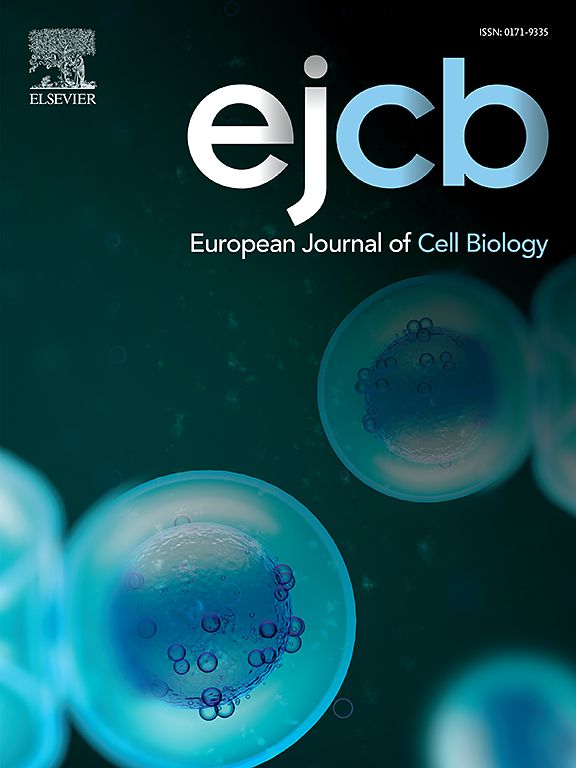Traction-regulated persistence governs durotaxis across cell types
IF 4.3
3区 生物学
Q2 CELL BIOLOGY
引用次数: 0
Abstract
Cell migration toward stiffer or softer environments (durotaxis) underlies processes from development to cancer metastasis, yet the underlying mechanism and its universality remain unclear. To resolve this, we investigated how traction forces and directional persistence dictate cell migration along stiffness gradients. We utilized tunable PEG hydrogels with stiffness gradients of 1–16 kPa and perturbed contractility (blebbistatin, oligomycin), and adhesion (vinculin mutants), in cancer cells exhibiting opposing durotactic biases. We found that cells exerting high traction forces migrate persistently towards stiffer regions (positive durotaxis), whereas those with reduced traction lose persistence and shift towards softer regions (negative durotaxis). We developed a computational model linking stiffness-dependent traction from a motor-clutch framework to F-actin stability-driven persistence, capturing both behaviors with one parameter set. The model predicts, and experiments confirm, that tuning myosin activity or adhesion reinforcement can switch durotaxis states. These findings establish a unified mechanism where traction-regulated persistence governs durotaxis bias across cell types. This insight advances design of biomaterials for directed cell migration and suggests therapeutic strategies to control cell trafficking in tissue repair and cancer.
牵引力调控的持久性控制着细胞类型之间的趋同性
细胞向更硬或更软环境的迁移(趋向性)是癌症发展到转移过程的基础,但潜在的机制及其普遍性尚不清楚。为了解决这个问题,我们研究了牵引力和定向持久性如何决定细胞沿刚度梯度迁移。我们使用可调的PEG水凝胶,其硬度梯度为1-16 kPa,并在表现出相反的多致性偏差的癌细胞中扰动收缩性(blebbistatin, oligomycin)和粘附性(vinculin突变体)。我们发现,施加高牵引力的细胞持续向较硬的区域迁移(正硬性),而牵引力降低的细胞则失去持久性并向较软的区域迁移(负硬性)。我们开发了一个计算模型,将电机离合器框架中依赖刚度的牵引力与f -肌动蛋白稳定性驱动的持久性联系起来,用一个参数集捕获这两种行为。该模型预测,实验证实,调整肌球蛋白活性或粘合增强可以改变硬度状态。这些发现建立了一种统一的机制,其中牵引力调节的持久性控制着不同细胞类型的趋向性。这一发现推进了定向细胞迁移生物材料的设计,并提出了控制组织修复和癌症中细胞运输的治疗策略。
本文章由计算机程序翻译,如有差异,请以英文原文为准。
求助全文
约1分钟内获得全文
求助全文
来源期刊

European journal of cell biology
生物-细胞生物学
CiteScore
7.30
自引率
1.50%
发文量
80
审稿时长
38 days
期刊介绍:
The European Journal of Cell Biology, a journal of experimental cell investigation, publishes reviews, original articles and short communications on the structure, function and macromolecular organization of cells and cell components. Contributions focusing on cellular dynamics, motility and differentiation, particularly if related to cellular biochemistry, molecular biology, immunology, neurobiology, and developmental biology are encouraged. Manuscripts describing significant technical advances are also welcome. In addition, papers dealing with biomedical issues of general interest to cell biologists will be published. Contributions addressing cell biological problems in prokaryotes and plants are also welcome.
 求助内容:
求助内容: 应助结果提醒方式:
应助结果提醒方式:


